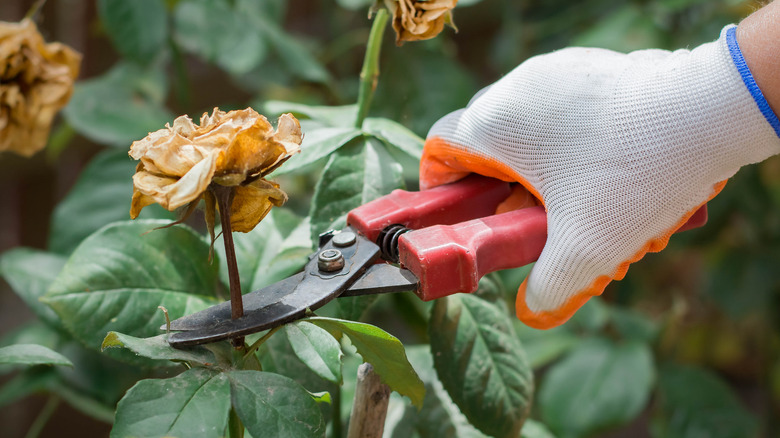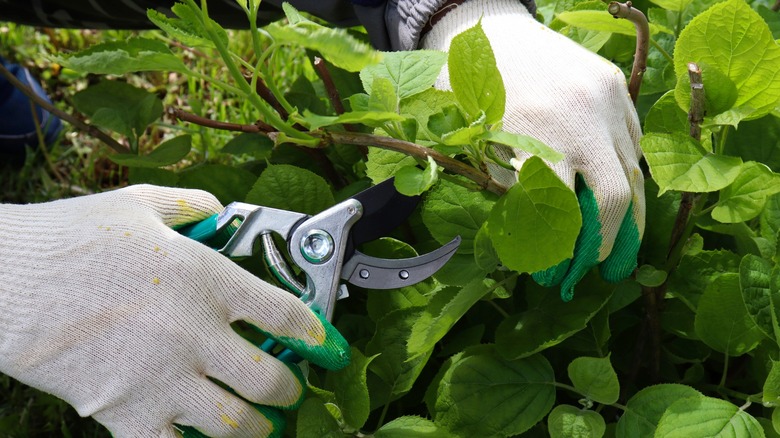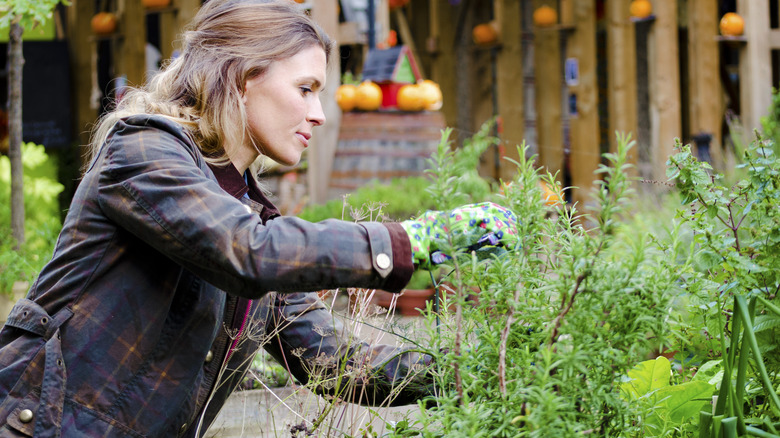Think Twice About Pruning Your Garden In The Summer Heat
Extreme or excessive heat can cause damage to all living things, including plants. Besides contributing to drought conditions, hot weather also accelerates dehydration, decomposition, the aging process, and more. And just like how cold temperatures below freezing cause damage to many plants, high temperatures can cause harm as well. When you start to see dead or dried foliage, your instinct is probably to prune it, but this would be a mistake. Pruning or thinning plants in high heat simply exposes the remaining healthy parts to the sun, making them more vulnerable to injury.
As part of transpiration, or the upward transport of water and nutrients from the plant's root, some water is excreted through the leaves, which also cools the plant. Scorching can happen when the plant loses water from transpiration faster than it can supply it to the leaves. Browning, yellowing, or darkening of the leaves can occur, and they may start to feel extra dry. Heat-damaged plants often lose leaves and flowers as well. However, even if you notice any of these signs on your foliage, don't start pruning in the summer heat.
What happens when you prune in the heat
All that happens when you prune anything in the extreme summer heat is that you expose parts of the plant to the sun that were previously protected by the damaged foliage. As tempting as it might be to remove those dead leaves, they're providing protection for the healthier portions of the plant or tree underneath. Additionally, dying leaves can still go through the process of photosynthesis, so they can be useful to the plant.
Another reason not to prune in hot weather is because pruning stimulates new growth, and new growth is especially soft and vulnerable to heat. Cutting away branches in the hot sun increases the probability of heat damage for the growing parts of the plant. Pruning simply opens up what we would call wounds, which can allow precious water to evaporate faster. They also make the foliage more likely to be harmed by diseases or pests.
When to prune instead
In general, most gardening tasks should be done in the early morning when temperatures are low, even before 8 a.m. For example, plants should always be hydrated in the early morning during the summer. This prevents the water from immediately evaporating, and it also gives the plant strength to withstand the heat throughout the day. If you must prune your plant in the summer, do so in the cool of the morning.
As for the time of year, it's typically best to prune plants in the winter or the spring, but it depends what types you have. If you have spring-flowering shrubs like early rhododendron, lilacs, and certain hydrangeas, prune those right after they're finished flowering. Waiting too long after blooming results in removing stems that would have produced flowers the next year. If you have summer-flowering shrubs like rose-of-Sharon and honeysuckle, prune them in late winter or early spring for best results. Also cut back evergreen shrubs, fruit-bearing trees, and roses in the early spring before new growth sprouts.


